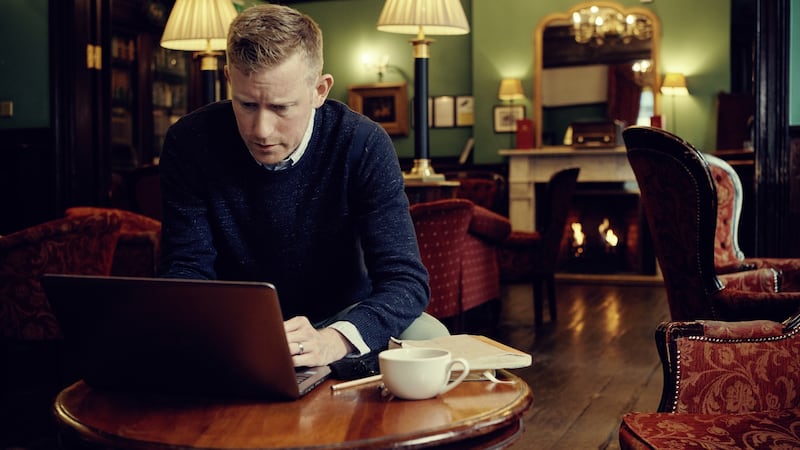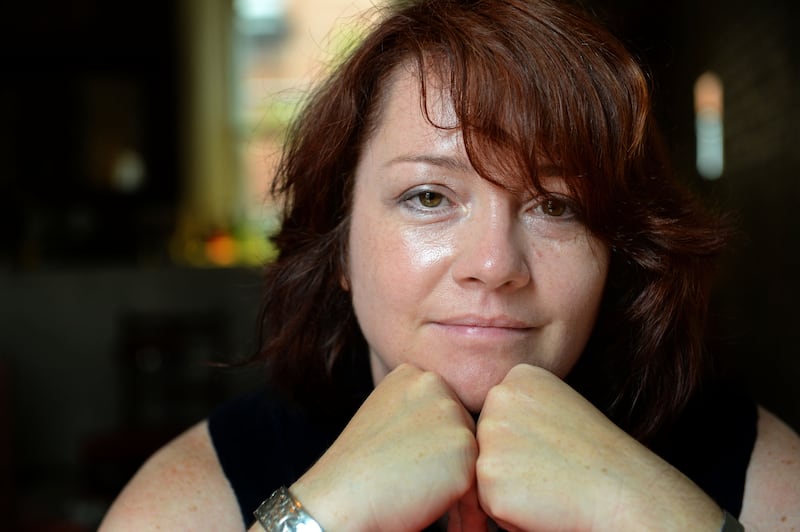There’s something peculiarly appropriate in reading some of Ireland’s best literary and arts journals during the holiday season. What better time to catch up with old favourites and, when you have some free time at last, discover some new publications too? If Christmas is a time for gatherings and unexpected encounters, then no medium is more apt than the literary magazine, offering us surprises, collisions and unexpected juxtapositions.
Ireland’s arts and literary journal scene is thriving as never before, and the following round-up shows that when the talent of a writer meets the eye of a good editor – backed with institutional support –, the results are rich. There are of course numerous fine publications not covered here – even to name some of them would mean unfairly omitting others – so this is merely a capricious snapshot.
Let’s open with the magazine that has become a firm cornerstone of the Irish literary establishment without ever losing its edge or originality. The Stinging Fly, believe it or not, is celebrating its 25th anniversary: as publisher Declan Meade (who founded the magazine along with Aoife Kavanagh) points out, “the first issue of the magazine was published in March 1998, a month before the Good Friday Agreement was signed.” Having talented editors helps: current magazine editor Lisa McInerney follows predecessors including Thomas Morris, Sally Rooney and Danny Denton.
The Stinging Fly’s aim, then as now, was to produce a magazine “in which readers could feel confident of finding work that was fresh and innovative and exciting”, one in “which writers could feel proud to have their work appear”. The second point is amply proved by the fact that new issue (Issue 47 volume 2) attracted more than 2,000 submissions. Forty-seven writers made the cut, across poetry, fiction and essays, and it’s a measure of the strength of the Stinging Fly name that it can feature an entire issue devoted to new writers, with no established names appearing, and sustain readers’ interest.
READ MORE
Highlights from the fiction entries in the current issue include P Kearney Byrne’s Switch Bitch, which subverts the title of Roald Dahl’s grim sex tales into the account of a woman being literally seduced into joining the Greenham Common protesters (note to younger readers: they were the Extinction Rebellion of the 1980s). “The world is always about to end. It’s always Armageddon somewhere,” says one character.
I also enjoyed Edel Brosnan’s novel extract Maura’s Back. The atmospheric setting of 1920s Russia, the vivid imagery and the teasing promise of “blood money, untraceable deals. And the Romanov crown jewels” made me want to read the rest of the book.
These stories are evidence that writing from contemporary Ireland needn’t be about contemporary Ireland, and in this issue The Stinging Fly also shows its commitment to underrepresented writers here; poetry including Sree Sen’s Skin Type: Dark and Nandi Jola’s The Dance is evidence of this.
We wanted to offer writers different opportunities, to connect them with artists, film-makers, theatre companies, and see how they’d collaborate
— Holy Show editor Brendan Mac Evilly
Formal experiment has always been part of The Stinging Fly’s ambit, and in this issue I was delighted by game designer Brenda Romero’s witty essay Patch Notes – 14.08.2006, which renders the story of a divorce into the language of software updates. “Fixed a memory issue in which old panties, nighties and lingerie caused players to experience loss of Morale.”
“A whole new generation of writers has come up through these pages,” writes Declan Meade in his introduction, and here we can see plenty of examples of the next generation, fully ready.
One of the writers who came up through the pages of The Stinging Fly is Colin Barrett. “We’re very lucky that The Stinging Fly is around and that there’s a native industry that supports the short story,” he says. “That was maybe the first time I felt, ‘Maybe I could be a writer’, discovering the Stinging Fly in the UCD library. ‘Hang on, this is about fucking now. This isn’t from the Paris Review in 1978 – these writers are all alive!”

His words are not from The Stinging Fly but from issue 4 of one of Ireland’s newer literary journals: the biannual TOLKA. TOLKA dedicates itself to “formally promiscuous non-fiction” and takes its name, like the river, from the Irish tolga: to overflow or to flood. Founding editor Catherine Hearn says, “We started during lockdown [and] we didn’t want our writers ‘responding to the current moment’” – but rather to look “beyond the moment.”
If TOLKA distinguishes itself by sticking to non-fiction, it also stands out for the range of writers: from newer names like Isobel O’Donovan and Mae Graber to some of the most well-known Irish writers currently working, including Darran Anderson, Eimear McBride and Mark O’Connell. Hearn reckons the attraction for writers is “we’re encouraging them to do something a bit weird and different”. The results speak for themselves – the new issue is a triumph, and Colin Barrett’s comments above come from a funny and eye-opening conversation with Nicole Flattery as they navigate the skills needed for a successful short story writer to become a novelist (premature death may be one of them).

Mark O’Connell’s entry is a typically smart, double-edged piece about living near the “dark, gaunt house on Usher’s Island” from James Joyce’s The Dead, now fallen into disrepair, reflecting the relationship the city has with Joyce: it rejected him during his life but now makes an industry of its love for him. On the proposal to rename Dublin Airport to James Joyce Airport, O’Connell has “a highly ambitious counterproposal: that we have two airports for Dublin, one called Riverdance International Airport, for tourists coming to the country, and another names James Joyce International Airport, for young Irish people forced to leave it.”
The inclusion of new writing from Eimear McBride feels like a scoop for TOLKA. Her piece Quark (more Joyce!) is rhythmic, seductive prose poetry (“Free in my giving, as is my wont, of the gift of maybes and the better maybe nots”) that packs strangeness and charm into its thousand words, and shows this relentlessly interesting writer doing something new again.
Banshee, the Cork-based twice-yearly literary journal of independent publisher Banshee Press, is now in its seventh year and is committed to “exciting, accessible, contemporary writing”. The fiction offers less formal experimentation than The Stinging Fly, but Issue 14 impresses by leading with Let’s Dance, a novella from Lucy Sweeney Byrne, which wonders how to enjoy your hedonistic years when the world – and your mother – is going to pot (one answer: take another line of coke and hope for the best).
Aidan O’Donoghue’s Finger is a surprising and strong story of masculinity, starting with a 12-year-old boy having his finger accidentally chainsawed off by his dad (“We can dispose of it for you, the doctor said. Respectfully, of course.”), while Maureen Ott’s essay How Long is a Piece of String? recounts a trip to Ireland from Canada after leaving her “fucker of a husband after 46 years”. “In my marriage, I had a mouthful of stones,” she writes. “But here in Ireland, I’m learning to spit them out, one by one.”
[ The Hill of Himself, a new short story by Aidan O’DonoghueOpens in new window ]
The poetry in Banshee offers interesting forms, including Adam Wyeth’s prose poetry and Lia Mills’s concrete poetry, where the poem takes the shape of its subject on the page, and Joseph Goosey’s playful poem in the form of an extract from a Paris Review interview.
Unquestionably the most beautiful in appearance of the journals I read for this piece was Holy Show – a distinction which makes perfect sense for “a magazine of contemporary life and culture as seen through the eyes of Ireland’s artists”. Editor and creative producer Brendan Mac Evilly says that “there are now a lot of spaces out there to publish stories, poems and essays. We wanted to offer writers different opportunities, to connect them with artists, film-makers, theatre companies, and see how they’d collaborate to fill 10 or 12 empty pages with full-colour images and text.”
The results in the fourth issue of Holy Show – the magazine appears annually – are terrific. Highlights are too many to list but include Niamh Campbell’s report from the set of the film of John McGahern’s That They May Face the Rising Sun, generously illustrated with behind-the-scenes photos as well as Laura McMorrow’s suggestive, atmospheric art.
I also loved A Shared Life, the charming illustrated diary by Korean artist Antic-Ham (aka Hyemee Kim) about life on Achill Island. “At the Mastersons Bar the bartender was holding the Visa card reader high to get a signal,” she writes on September 15th, 2021. “I said to him, ‘In our gallery I take the machine towards the window to receive the signal.’ And he said, ‘I bring it in front of this frame on the wall,’ showing the picture of Jesus.”
Elsewhere in Holy Show, Gavin Corbett (author of the eccentric masterpiece Green Glowing Skull) records conversations, including one reporting a couple having a domestic during a threesome; a series of interviews by Liam Cagney with Irish DJs who play in Berlin; and Séan Hewitt’s extraordinary dive into the Irish Queer Archive, including photographic records from Tel-a-Friend, the 1970s and 80s “homosexual befriending and information service”.
Another magazine offering a wide range of content – features, reportage, commentary, fiction, poetry, illustration and photography – is Belfast-based The Tangerine. Variety is built in: the title comes from Louis MacNeice’s poem Snow, where the poet peels a tangerine and revels in “the drunkenness of things being various”.
Issue 11 features fiction from some of Ireland’s brightest new voices, including Sarah Gilmartin, whose The Game shows a group of bridge players accused of foul play, and Susannah Dickey’s Stuffed Peppers, which addresses our attitudes to ageing and features a lover who, when dressing, puts his shirt on first, much to the disgust of his partner. “You look like Winnie the Pooh.”
In poetry, Eva Isherwood-Wallace’s Azalées Blanches is a short stunner, Joey Connolly’s 130a Wightman Road tells of visits by a stray tomcat, who would “roll on his back as if he’d learned from the / pornstar cats on Instagram”, and Leontia Flynn’s On Platforms and Plate Glass Waiting Rooms is a typically brilliant meditation on the restlessness and relentlessness of life.
[ Leontia Flynn wins Irish Times Poetry Now AwardOpens in new window ]
And it’s a particular pleasure in The Tangerine to see non-fiction that goes outside the personal essay form, as in Dominic Leonard’s piece on the work of Bhanu Kapil, Towards a Postcolonial Lyric, which meets the magazine’s aim for “publishing long form work [that allows] our writers to investigate the current cultural and political climate in depth.”
The conclusion of this brief survey? The literary and arts journal scene in Ireland is in rude health. Now read on. Oh, and one more conclusion: in fiction, the death of speechmarks has been greatly exaggerated.












